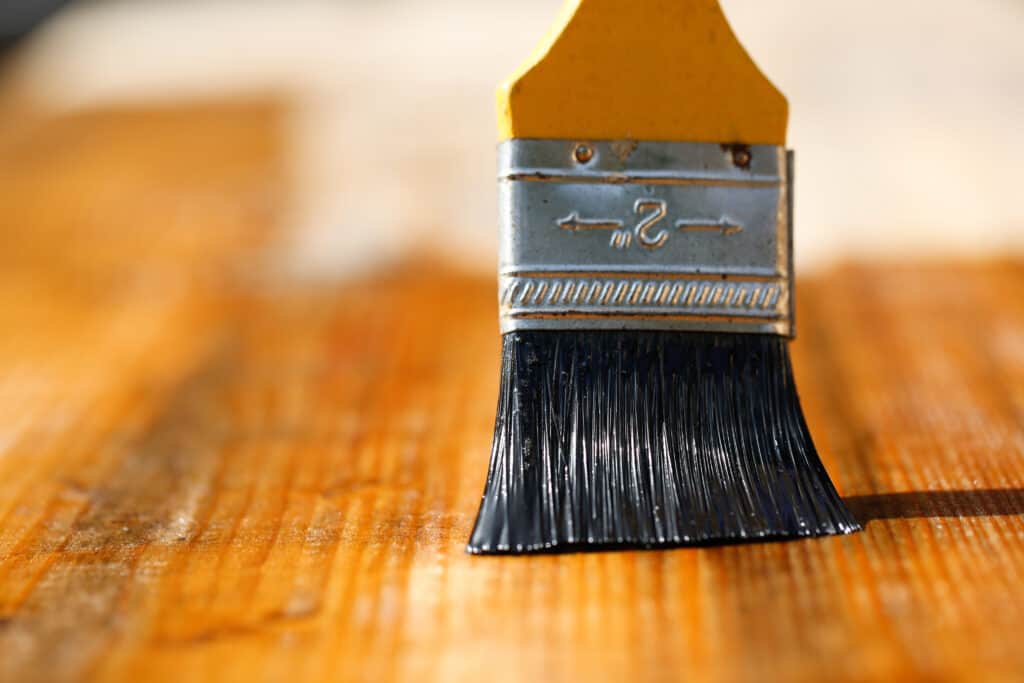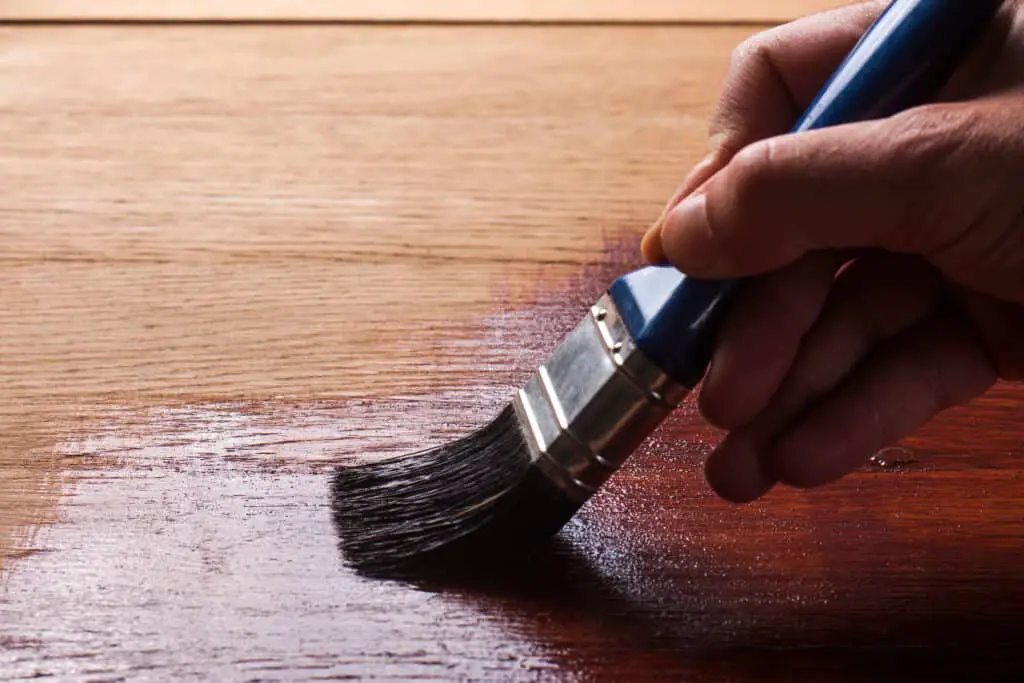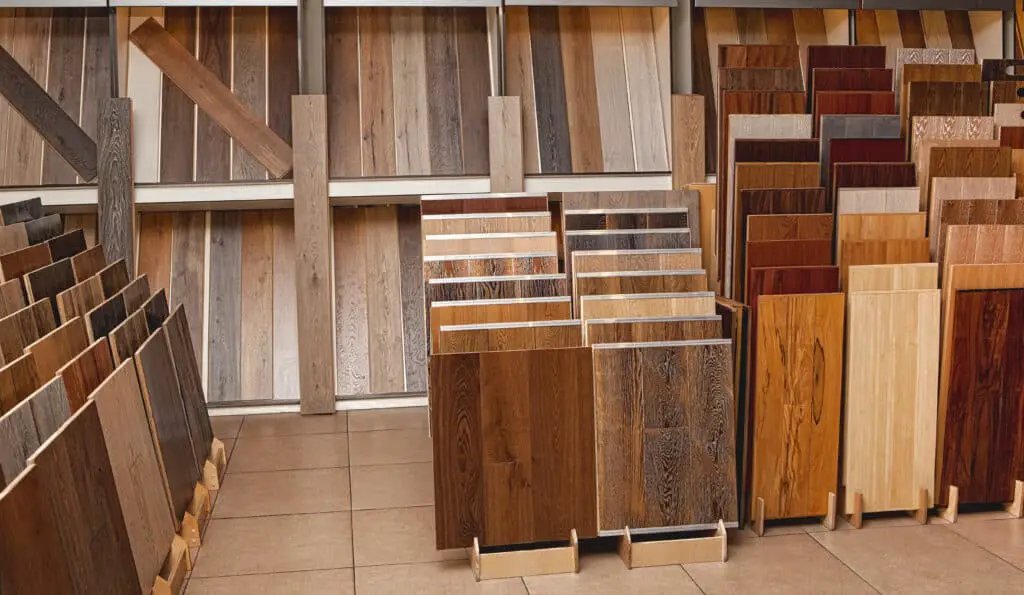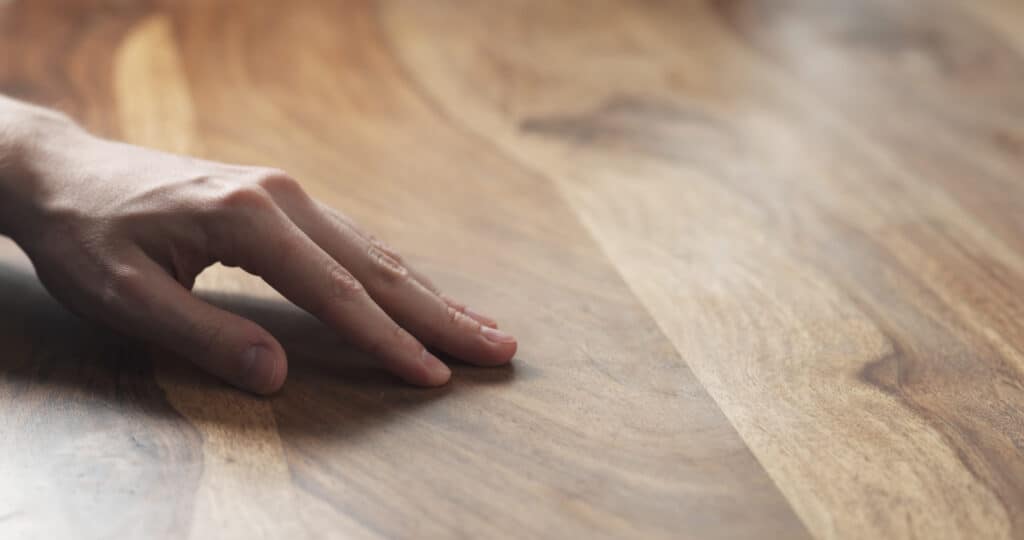Whenever you are using wood, you want to make sure it’s protected, looks good, and feels good. To control these factors, you need to apply a wood finish. Sometimes the desired result comes from using multiple wood finishes.
Applying polyurethane over amber shellac is not recommended due to the wax qualities of amber shellac. However, with the right process, oil-based polyurethane over amber shellac can still provide a durable finish. Otherwise, you must use dewaxed amber shellac for the two finishes to work together.
There is a common rule that you shouldn’t apply a polyurethane (poly) finish on top of one that contains wax. Why is this and how can the rule be bent?
The huge variety of finishes for furniture is one of the subjects we will be diving deeply into during our live online workshops at Cucamonga Woodworking and you can check out our past workshop YouTube videos Here(Link to Cucamonga Woodworking)
What Is Polyurethane Wood Finish?
Polyurethane is essentially liquid plastic. It is used to protect surfaces from scratches and water damage. When applied, the wood has a glossy smooth finish. There are water-based and oil-based polyurethane finishes.
The water-based polyurethane dries with a clear coat, has a minimal odor, and dries pretty quickly. This combination is handy for lots of indoor projects, but it isn’t a great finish for surfaces that are often exposed to heat or natural weathering. (Source)
Oil-based polyurethane has an amber tint, strong odor, and slower drying time. However, is more durable and heat resistant than water-based polyurethane. You can use it on outdoor surfaces and items that will experience more wear and tear.
Just like any other finish, you can get both water-based and oil-based polyurethane in different sheens for different looks: flat or matte, satin, semi-gloss, and high-gloss.
What Is Amber Shellac Wood Finish?

Amber Shellac is a varnish that offers a warm orange glow to the wood, making the color appear rich and almost antique-like. It will not darken with age, but you can make it lighter but mixing it with Clear Shellac.
A unique feature of Amber Shellac is that is created from insect secretions. One of the key ingredients is lac, which is collected from the resin secretions that are created by many insect species. Once the lac has been collected, it is then crushed and sieved to remove impurities. This gets washed multiple times and is then referred to as seedlac. It then is integrated into the finish’s mixture to become an essential part of Amber Shellac. (source)
Why Not To Put Polyurethane Over Amber Shellac
As stated before, many people may have heard that you should not put polyurethane over Amber Shellac. Even the back of Shellac cans warn about the combination. That being said, many people have ignored these warnings and used polyurethane over amber shellac without noticing problems. This is because applying polyurethane over Amber Shellac (with wax) can lead to the chipping of the varnish over time.
Another reason to avoid applying polyurethane over Amber Shellac is because of polyurethane’s decreased quality. Polyurethane is an inexpensive option for finishing and it isn’t the best quality. By coating Amber Shellac with two or three layers of polyurethane, the finish will not be as clear and depending on the brand of polyurethane, it could yellow over time.
When Can You Put Polyurethane Over Amber Shellac?

Using Oil-Based Polyurethane Over Waxed Amber Shellac
First, apply the Amber Shellac in a thin coat and allow it to dry overnight. Scuff sand the thinly coated wood to prepare for additional coats of finish. Lightly dust the sand off with a cloth moistened with mineral spirits and wait for the wood to be completely dry again.
Then, apply the oil-based polyurethane in a thin coat and allow it to dry. Repeat the process for the first coat of Amber Shellac by scuff sanding the polyurethane coat and removing the sand dust. Repeat this for two or three thin coats of polyurethane.
This process will not negate the concern of polyurethane reducing the overall finish’s clarity, but it will allow for the two finishes to adhere despite Amber Shellac having wax in it.
Using Polyurethane Over Dewaxed Amber Shellac
Amber Shellac can be bought dewaxed in the form of flakes. This isn’t hard to find, but you will have to mix the dewaxed Amber Shellac flakes yourself. Typically the ratio is two pounds of flakes for one gallon of alcohol. You will combine the flakes and alcohol, let it sit for three to six hours.
While the mixture is sitting, agitate it occasionally. The more you agitate it, the quicker it will dissolve. Once the mixture is dissolved, strain it through a fine-mesh cheesecloth to remove any impurities. Then, stir it thoroughly and let it sit for a few more hours.
Apply a thin coat of the dewaxed Amber Shellac to the wood. Avoid incorporating air into the shellac. Allow the coat to dry, two to four hours, and then scuff sand the surface. Lightly dust the sand off with a cloth moistened with mineral spirits and wait for the wood to be completely dry again. Depending on the look you’re going for, repeat this for one or two more coats of the dewaxed Amber Shellac. After the last coat, complete the sanding process and apply a coat of polyurethane.
Given the dewaxed nature of this mixture, there shouldn’t be any problems with adherence.
Polyurethane Versus Amber Shellac

Considering the controversy behind using polyurethane over Amber Shellac, it may be a better option to just pick one or the other.
Pros and Cons of Polyurethane
Polyurethane gives a clear finish that promotes a more modern look. Be aware that because it’s made from plastic, some have commented that it makes their furniture look more plastic than modern. If you’re specifically using oil-based polyurethane, this will also be a more durable option for moisture and heat resistance. However, the increased durability makes it harder to repair. It’s also harder to apply because it’s more likely to form bubbles and show visible brush strokes.
Pros and Cons of Amber Shellac
Amber Shellac gives a more natural look to furniture with a warm amber glow. Since it comes from insect secretions, it is also a more environmentally-friendly option. This will result in a completely non-toxic finish. It is less durable but easier to apply and easier to repair. It’s important to note that shellac has a very short shelf life so you’ll have to use it fresh and quick.


